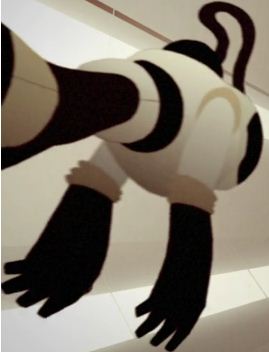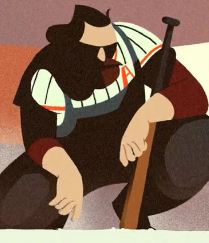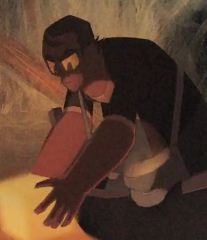Page 1 of 1
How do I get this Animation look?
Posted: 16 Jan 2012, 19:05
by Faelar
Hi everyone,
I´m new here. I´m getting started with TVPaint Animation and I already read the manual of 10.0 Version.
But now I have some questions about a specific animation look.
1) I want my animation characters only have inner lines and no outer lines. How do I manage that? Should I draw the clean ups and then fullfill the areas with color (on the layer below the clean up layer) and finally remove the clean up outlines? Or how should I manage it? The result should look like in these Gobelins films:

- Grieseleffekt 1.JPG (19.4 KiB) Viewed 13130 times

- Grieseleffekt 2.JPG (18.47 KiB) Viewed 13130 times

- Grieseleffekt 3.JPG (14.48 KiB) Viewed 13130 times
2) In the end the film should ideally have a grainy look like "SOAP" from L'ecole de Gobelin. What effect is this? And do I have to put this seperate on each layer (like a paper texture) or as a final effect on the final movie.
Thanks for reading! I hope you can help me. Because i feel lost

.
Faelar
Re: How do I get this Animation look?
Posted: 16 Jan 2012, 21:11
by Fabrice
hello Faelar,
Welcome in the TVPaint boards,
A lot of students use the filled stroke tool, rather than using the classical cleanup lines + floodfill tool.
About the textures, there are many ways to proceed. I will try to find some related topics if possible.
"Having the texture on an other layer, and using the masks" is the method I use to recommand to the gobelins students when teaching them, even if it's not the only one.
All depend on the project, the characters movements, etc ...
Please tell us more about you.
Re: How do I get this Animation look?
Posted: 17 Jan 2012, 10:01
by ematecki
Faelar wrote:
2) In the end the film should ideally have a grainy look like "SOAP" from L'ecole de Gobelin. What effect is this? And do I have to put this seperate on each layer (like a paper texture) or as a final effect on the final movie.
This really depends on what you expect.
If you want the grain to look like film grain, i.e. it's the same everywhere regardless of the content, it's a final effect.
If the grain depends on the content (the character's skin has a different grain than the clothes, different again than the sky),
you must do it on every layer.
Re: How do I get this Animation look?
Posted: 17 Jan 2012, 22:09
by slowtiger
Usually "grain" refers to something moving, changing from frame to frame, like film grain. The static variant is called "texture".
Both kinds are easily applied in TVP with the use of masks. You need to experiment a lot to get your desired look. Some parameters to experiment with are:
- texture source (something scanned, or painted, or created algorythmically)
- scale
- contrast
- blend mode
Getting any texture just right can be a tricky and time consuming process.
Re: How do I get this Animation look?
Posted: 18 Jan 2012, 10:09
by Henk Beumers
I have alot of textures on paper like aquarel or chalk. Things you like and find atractive. Scan them and make a brush with it. Just cut out a piece and save it in the brush bin. Use "floodfill" with "brush wrapping" on and apply the fill to a suface or fill a closed line. Now your shape has the texture of your choice. It depends on the shape you're filling how the texture spreads itself inside the bounderies of the surface. You have to tweak "stretch/tile/wrap" to get the effect you need. Also the size o the brush is relevant. If you have big brush the texture will be compressed inside the dimention of the shape. If you want something special you have to make specific textures to use this methode. Experiment with it. You can fill every texture, drawing, photo ect. Because each shape is different it will have a different texture-spread, so it will move during playback. If you don't want this you have to use texture or paper.
Sometimes it doesn't work because the shapes are to complex. You need a different method then. There is also more control if you use "freehand fill". You will notice the way the texture spreads inside shape depends on the shape you draw around the shape you are filling at the moment. Use a pattern to see how it works.
Henk Beumers.
 .
.